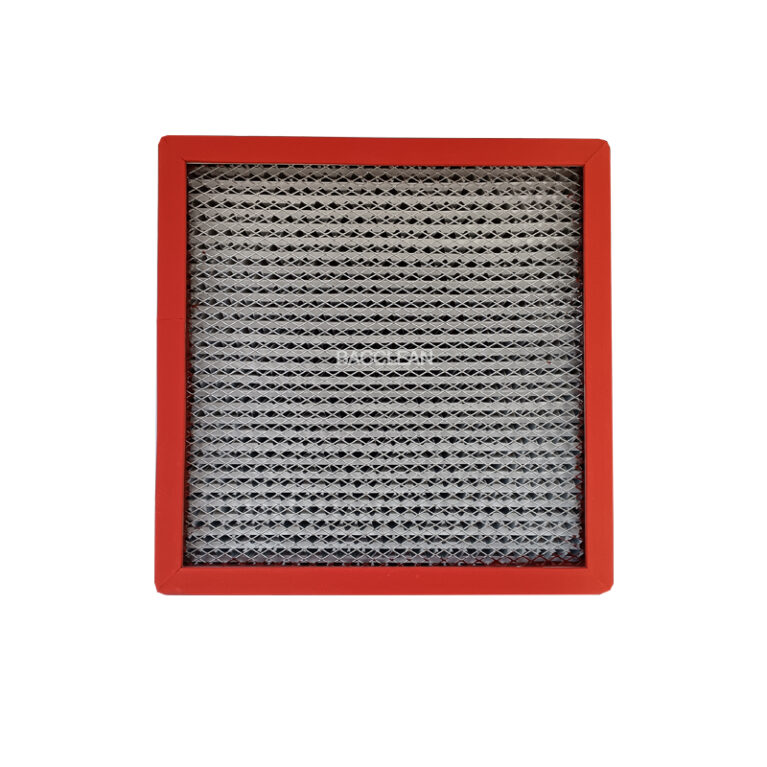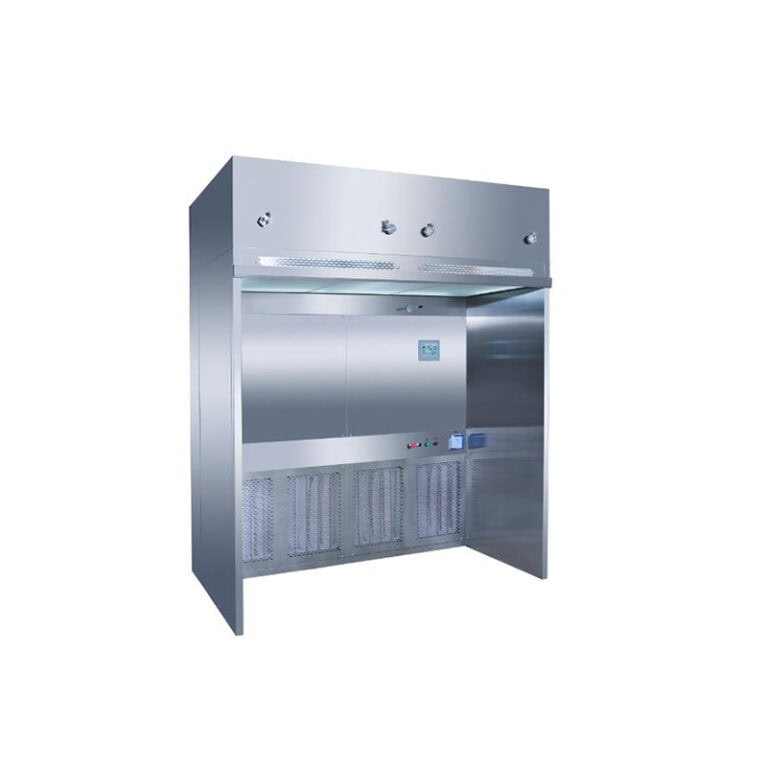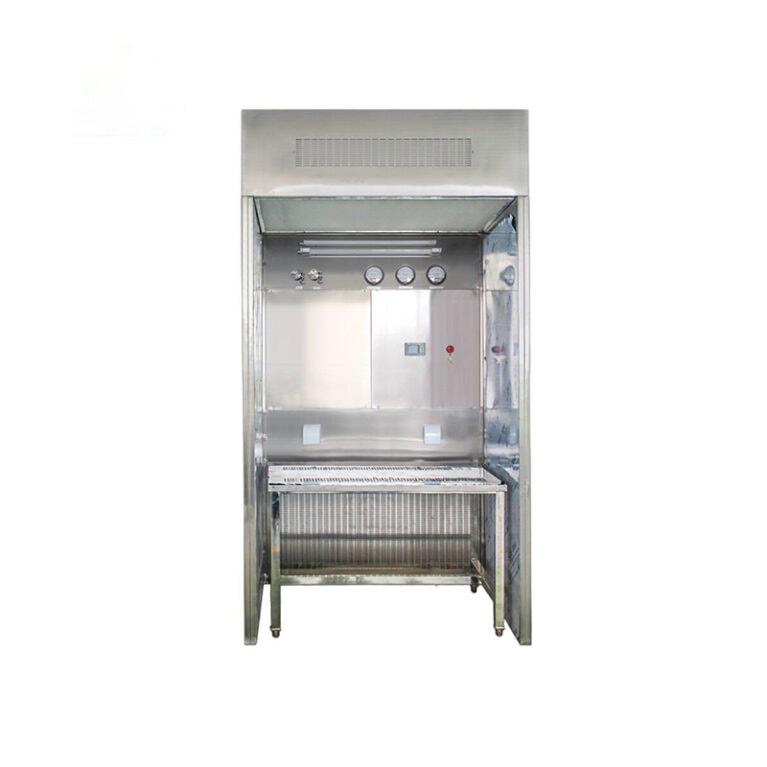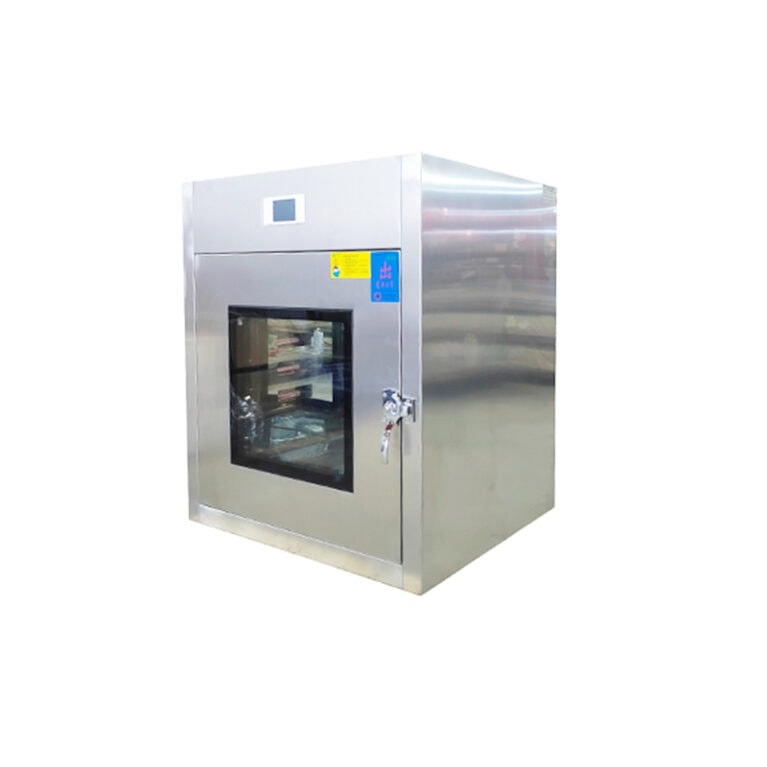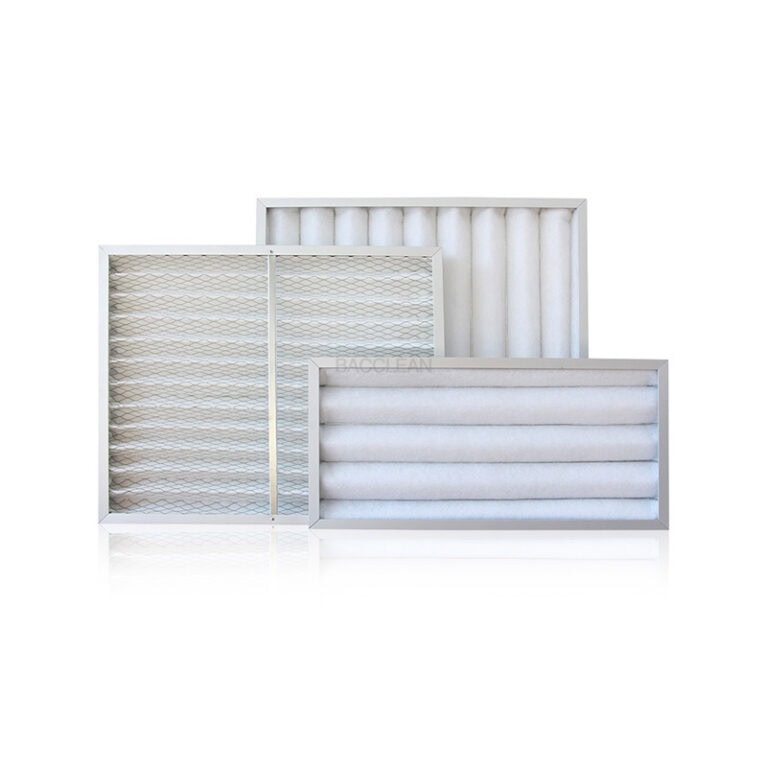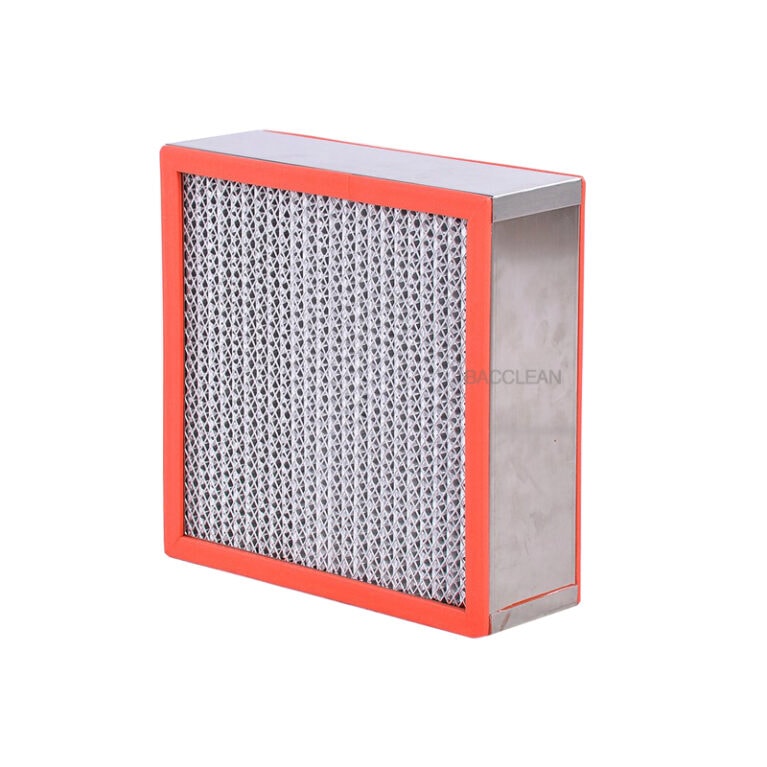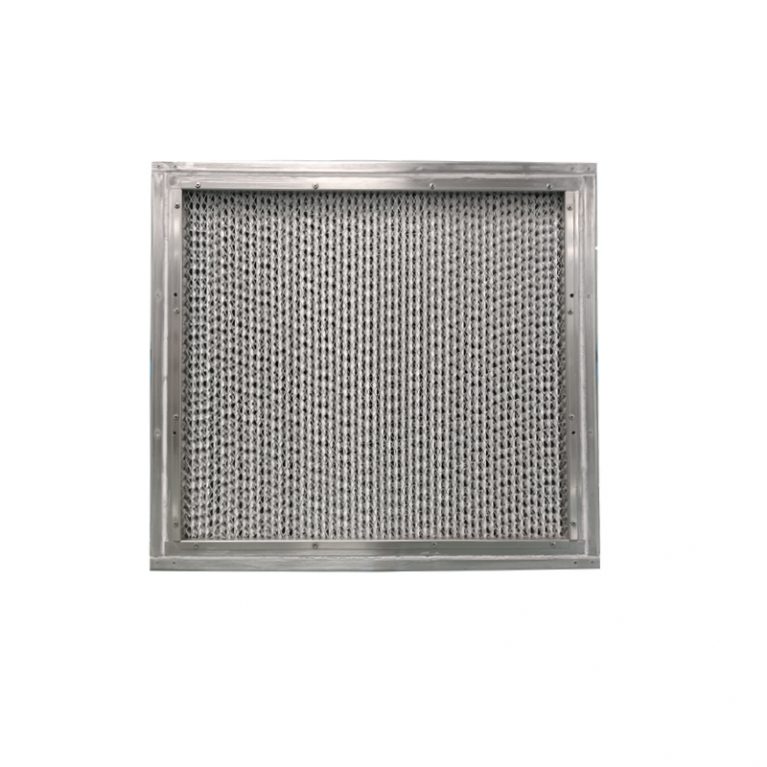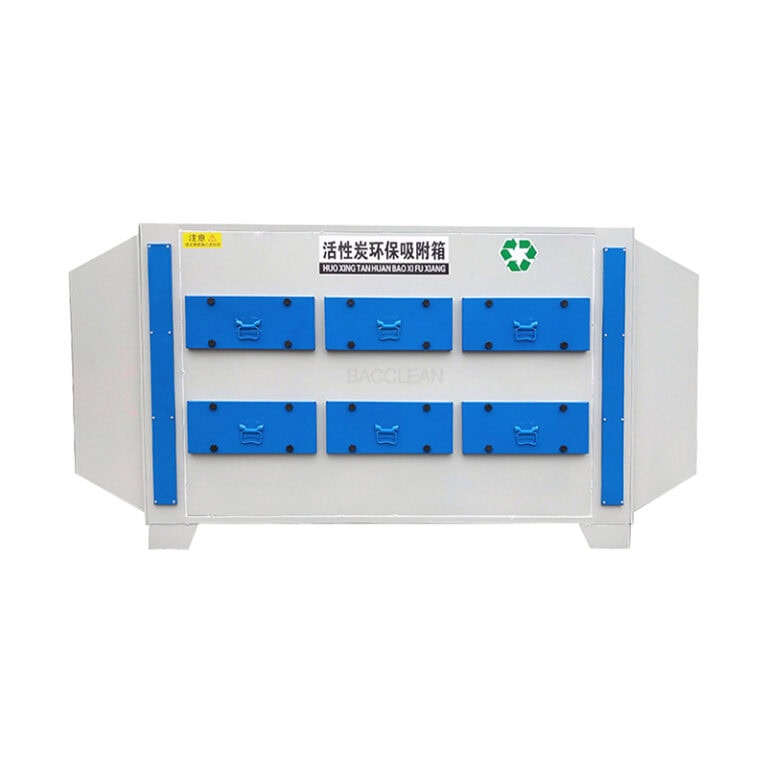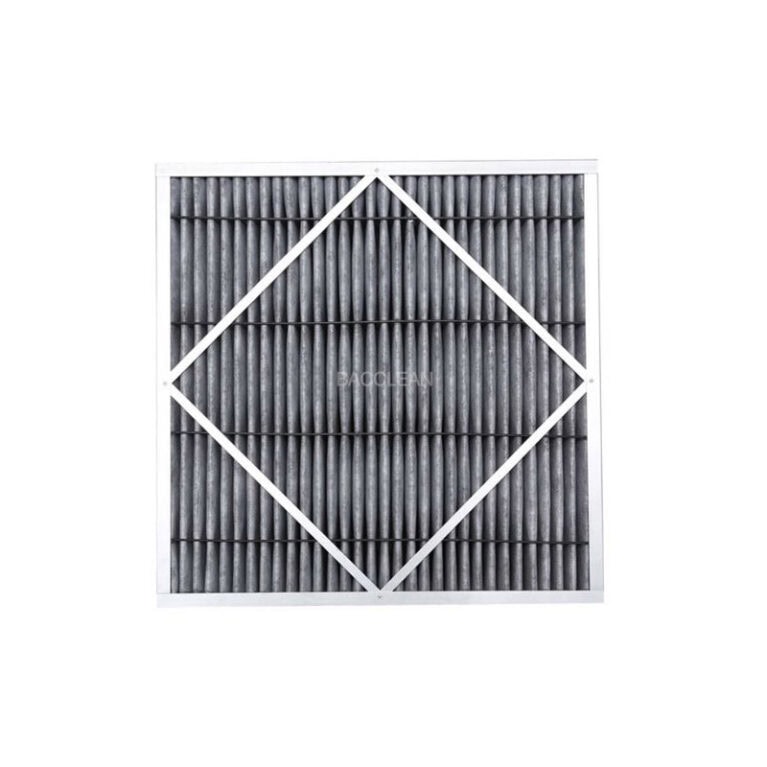High-temperature resistant air filters with separators (typically with a temperature resistance range of 150℃-300℃, and some special models can be even higher) are widely used in industrial and special scenarios with high temperatures, high humidity or hot air flows due to their stable filtration efficiency (mostly medium to high efficiency, such as F8-H14 levels) and structural tolerance in high-temperature environments. The core is to address the “demand for air purification in high-temperature environments”. The following are its main application fields and specific scenarios, classified and sorted by industry as follows:
The first major application area is the industrial manufacturing field. In this context, the core demand is dust and impurity filtration in high-temperature production processes, to protect equipment and maintain product quality.
Industrial manufacturing is the primary application scenario for this type of filter, especially in processes involving high-temperature heating, baking, and smelting. It is necessary to filter out contaminants such as dust, fibers, and metal shavings in the hot air flow to prevent equipment damage or product defects.
Automobile and parts manufacturing
Painting workshop: The intake air filtration of high-temperature drying furnaces (such as drying after body electrophoresis and topcoat drying, with temperatures usually ranging from 120℃ to 220℃) to prevent dust from adhering to the surface of the car paint and causing “particle defects”.
Engine/exhaust system manufacturing: Workshop ventilation and filtration for high-temperature casting and forging processes, or high-temperature exhaust gas pretreatment filtration for engine test benches (with heat-resistant filter materials required).
Manufacturing of electronic and electrical appliances
Semiconductor/chip manufacturing: Purification of air intake for high-temperature diffusion furnaces and annealing furnaces (temperature 150℃-300℃) to prevent dust from contaminating silicon wafers and affecting chip yield.
Sintering process of electronic components (such as capacitors and resistors) : Air filtration in high-temperature sintering furnaces to prevent impurities from causing performance failure of components.
Metal processing and metallurgy
Steel/non-ferrous metal smelting: Workshop ventilation or flue gas pretreatment filtration for high-temperature furnaces (such as electric arc furnaces, induction furnaces) to reduce the diffusion of high-temperature dust (such as iron oxide dust);
Metal heat treatment: The air intake filtration of the heating furnace in the quenching and tempering processes protects the heating elements (such as electric heating wires) inside the furnace from being blocked by dust, and at the same time prevents uneven oxidation on the surface of the metal workpieces.
Glass/ceramic manufacturing
Glass melting furnace/forming workshop: During the high-temperature glass liquid processing, it is necessary to filter the glass debris and quartz sand dust in the hot air flow of the workshop to prevent contamination of the finished products (such as optical glass, display screen glass).
Ceramic firing: Air intake filtration for high-temperature kilns (temperature 180℃-280℃) to prevent dust from adhering to the surface of the ceramic body, which may cause spots and cracks after firing.
Shifting from manufacturing, another important area is energy and environmental protection. Here, the focus moves to the purification of high-temperature flue gas and waste gas, either to meet emission standards or protect back-end equipment.
This field mainly focuses on the treatment of high-temperature flue gas and waste gas. Filters are required to intercept particulate matter at high temperatures, reducing the load on subsequent treatment equipment (such as desulfurization towers and heat exchangers), or directly meeting emission requirements.
The power industry (thermal power/biomass power generation)
Coal-fired boilers/biomass boilers: The “high-temperature pre-filtration” at the tail flue of the boiler intercepts fly ash in the flue gas (at a temperature of 150℃-250℃), preventing fly ash from clogging the denitration catalyst and air preheater at the back end, and extending the service life of the equipment.
Waste incineration power generation: The flue gas from the incinerator is initially filtered after cooling (at a temperature of 180℃-220℃) to remove some dust before entering the bag filter to reduce bag wear.
The chemical and petrochemical industry
High-temperature reaction vessels/distillation columns: Pretreatment filtration for high-temperature waste gas generated during the production process (such as synthetic resin, petroleum cracking waste gas, with temperatures ranging from 160 ° C to 280 ° C), to remove polymer particles and carbon black dust, preventing clogging of subsequent condensers or waste gas treatment devices.
Catalyst regeneration process: During the catalyst regeneration in the catalytic cracking (FCC) unit, the filtration of high-temperature flue gas (approximately 200 ° C -300 ° C) is carried out to recover catalyst particles and reduce resource waste.
Waste treatment (high-temperature incineration)
Medical waste/industrial hazardous waste incineration: High-temperature filtration of incineration tail gas (temperature 180℃-250℃) to remove heavy metal particles (such as lead and mercury compounds) and incineration residues in the flue gas, creating clean conditions for subsequent activated carbon adsorption (dioxin removal).
Moving to the food and pharmaceutical fields, the core requirement is “sanitary-grade filtration” in high-temperature environments, with a strong emphasis on meeting safety standards.
This field has extremely high requirements for the “cleanliness” and “hygiene” of filtration. At the same time, it needs to deal with high-temperature sterilization, drying and other processes. The filter must have heat resistance and anti-pollution properties (some need to meet food grade/pharmaceutical grade certifications, such as FDA, GMP).
Food processing
Baking industry: High-temperature ovens for products such as bread and biscuits (temperature 150℃-220℃) with air intake filtration to prevent dust and microorganisms in the air from contaminating the surface of food, ensuring food safety.
Milk powder/protein powder manufacturing: Tail gas filtration of spray drying towers (outlet air temperature 120℃-180℃), recovery of undried powder raw materials, and prevention of dust emissions polluting the environment at the same time.
Oil refining: Air intake filtration in the high-temperature deodorization process (temperature 220℃-260℃) to prevent impurities from affecting the quality of the oil.
Pharmaceuticals and biopharmaceuticals
Pharmaceutical drying: High-temperature drying equipment for Chinese herbal extracts and Western medicine tablets (temperature 120℃-200℃) with air intake filtration, meeting GMP clean workshop requirements, to prevent the drugs from being contaminated by microorganisms or dust.
Sterile preparation production: Purification of the intake air of some high-temperature sterilization tunnels (such as sterilization of oral liquid bottles at 180℃-250℃) to ensure that the packaging containers are not re-contaminated after sterilization.
Iv. Special Scenarios and Laboratories (Core Requirements: Precise Filtration under Extreme High Temperatures, Meeting experimental/Special process Requirements)
Such scenarios are mostly niche but high-demand fields, where filters need to maintain stable performance under specific high-temperature conditions to support experiments or special production.
Aerospace and military industry
Engine testing: During ground tests of aero engines, filtration of high-temperature exhaust gas (temperature 200℃-300℃) is carried out to remove metal particles from the exhaust gas and protect the sensors of the testing equipment.
High-temperature material testing: A simulated environmental test chamber for spacecraft high-temperature resistant materials (such as titanium alloys and ceramic matrix composites), with high-temperature gas flow (up to 300℃) filtration to ensure a clean test environment and accurate data.
Scientific research laboratory
High-temperature reaction experiments: Air intake/exhaust filtration for high-temperature reaction devices in the fields of materials science and chemistry (such as tube furnaces and muffle furnaces) to prevent external dust from entering the reaction system or impurities in the discharged high-temperature exhaust gas from polluting the laboratory environment.
Simulated environmental testing: such as air filtration in the “High Temperature and high humidity aging test” chamber to ensure the cleanliness of the test environment and prevent impurities from affecting the aging results of the samples.
Nuclear industry (Special temperature-resistant models)
Nuclear reactor auxiliary facilities: For some cooling systems or exhaust gas treatment links involving high temperatures, radiation-resistant and high-temperature resistant pleated filters (with a temperature resistance of approximately 200℃-250℃) should be used to filter the airflow containing radioactive dust and prevent radiation leakage.
Summary: Core application logic
The application scenarios of high-temperature resistant air filters with separators essentially require the simultaneous compliance of two conditions: ① The existence of a high-temperature environment of ≥150℃; ② The air in this environment needs to be purified (removing dust, impurities, microorganisms, etc.). Its core value lies in “not losing effectiveness or releasing harmful substances at high temperatures while achieving stable filtration”. Therefore, all application fields revolve around this core, ranging from industrial production to people’s livelihood security and high-end scientific research, covering multiple industries that have a strong demand for “high-temperature cleanliness”.
The first major application area is the industrial manufacturing field. In this context, the core demand is dust and impurity filtration in high-temperature production processes, to protect equipment and maintain product quality.
Industrial manufacturing is the primary application scenario for this type of filter, especially in processes involving high-temperature heating, baking, and smelting. It is necessary to filter out contaminants such as dust, fibers, and metal shavings in the hot air flow to prevent equipment damage or product defects.
Automobile and parts manufacturing
Painting workshop: The intake air filtration of high-temperature drying furnaces (such as drying after body electrophoresis and topcoat drying, with temperatures usually ranging from 120℃ to 220℃) to prevent dust from adhering to the surface of the car paint and causing “particle defects”.
Engine/exhaust system manufacturing: Workshop ventilation and filtration for high-temperature casting and forging processes, or high-temperature exhaust gas pretreatment filtration for engine test benches (with heat-resistant filter materials required).
Manufacturing of electronic and electrical appliances
Semiconductor/chip manufacturing: Purification of air intake for high-temperature diffusion furnaces and annealing furnaces (temperature 150℃-300℃) to prevent dust from contaminating silicon wafers and affecting chip yield.
Sintering process of electronic components (such as capacitors and resistors) : Air filtration in high-temperature sintering furnaces to prevent impurities from causing performance failure of components.
Metal processing and metallurgy
Steel/non-ferrous metal smelting: Workshop ventilation or flue gas pretreatment filtration for high-temperature furnaces (such as electric arc furnaces, induction furnaces) to reduce the diffusion of high-temperature dust (such as iron oxide dust);
Metal heat treatment: The air intake filtration of the heating furnace in the quenching and tempering processes protects the heating elements (such as electric heating wires) inside the furnace from being blocked by dust, and at the same time prevents uneven oxidation on the surface of the metal workpieces.
Glass/ceramic manufacturing
Glass melting furnace/forming workshop: During the high-temperature glass liquid processing, it is necessary to filter the glass debris and quartz sand dust in the hot air flow of the workshop to prevent contamination of the finished products (such as optical glass, display screen glass).
Ceramic firing: Air intake filtration for high-temperature kilns (temperature 180℃-280℃) to prevent dust from adhering to the surface of the ceramic body, which may cause spots and cracks after firing.
Shifting from manufacturing, another important area is energy and environmental protection. Here, the focus moves to the purification of high-temperature flue gas and waste gas, either to meet emission standards or protect back-end equipment.
This field mainly focuses on the treatment of high-temperature flue gas and waste gas. Filters are required to intercept particulate matter at high temperatures, reducing the load on subsequent treatment equipment (such as desulfurization towers and heat exchangers), or directly meeting emission requirements.
The power industry (thermal power/biomass power generation)
Coal-fired boilers/biomass boilers: The “high-temperature pre-filtration” at the tail flue of the boiler intercepts fly ash in the flue gas (at a temperature of 150℃-250℃), preventing fly ash from clogging the denitration catalyst and air preheater at the back end, and extending the service life of the equipment.
Waste incineration power generation: The flue gas from the incinerator is initially filtered after cooling (at a temperature of 180℃-220℃) to remove some dust before entering the bag filter to reduce bag wear.
The chemical and petrochemical industry
High-temperature reaction vessels/distillation columns: Pretreatment filtration for high-temperature waste gas generated during the production process (such as synthetic resin, petroleum cracking waste gas, with temperatures ranging from 160 ° C to 280 ° C), to remove polymer particles and carbon black dust, preventing clogging of subsequent condensers or waste gas treatment devices.
Catalyst regeneration process: During the catalyst regeneration in the catalytic cracking (FCC) unit, the filtration of high-temperature flue gas (approximately 200 ° C -300 ° C) is carried out to recover catalyst particles and reduce resource waste.
Waste treatment (high-temperature incineration)
Medical waste/industrial hazardous waste incineration: High-temperature filtration of incineration tail gas (temperature 180℃-250℃) to remove heavy metal particles (such as lead and mercury compounds) and incineration residues in the flue gas, creating clean conditions for subsequent activated carbon adsorption (dioxin removal).
Moving to the food and pharmaceutical fields, the core requirement is “sanitary-grade filtration” in high-temperature environments, with a strong emphasis on meeting safety standards.
This field has extremely high requirements for the “cleanliness” and “hygiene” of filtration. At the same time, it needs to deal with high-temperature sterilization, drying and other processes. The filter must have heat resistance and anti-pollution properties (some need to meet food grade/pharmaceutical grade certifications, such as FDA, GMP).
Food processing
Baking industry: High-temperature ovens for products such as bread and biscuits (temperature 150℃-220℃) with air intake filtration to prevent dust and microorganisms in the air from contaminating the surface of food, ensuring food safety.
Milk powder/protein powder manufacturing: Tail gas filtration of spray drying towers (outlet air temperature 120℃-180℃), recovery of undried powder raw materials, and prevention of dust emissions polluting the environment at the same time.
Oil refining: Air intake filtration in the high-temperature deodorization process (temperature 220℃-260℃) to prevent impurities from affecting the quality of the oil.
Pharmaceuticals and biopharmaceuticals
Pharmaceutical drying: High-temperature drying equipment for Chinese herbal extracts and Western medicine tablets (temperature 120℃-200℃) with air intake filtration, meeting GMP clean workshop requirements, to prevent the drugs from being contaminated by microorganisms or dust.
Sterile preparation production: Purification of the intake air of some high-temperature sterilization tunnels (such as sterilization of oral liquid bottles at 180℃-250℃) to ensure that the packaging containers are not re-contaminated after sterilization.
Iv. Special Scenarios and Laboratories (Core Requirements: Precise Filtration under Extreme High Temperatures, Meeting experimental/Special process Requirements)
Such scenarios are mostly niche but high-demand fields, where filters need to maintain stable performance under specific high-temperature conditions to support experiments or special production.
Aerospace and military industry
Engine testing: During ground tests of aero engines, filtration of high-temperature exhaust gas (temperature 200℃-300℃) is carried out to remove metal particles from the exhaust gas and protect the sensors of the testing equipment.
High-temperature material testing: A simulated environmental test chamber for spacecraft high-temperature resistant materials (such as titanium alloys and ceramic matrix composites), with high-temperature gas flow (up to 300℃) filtration to ensure a clean test environment and accurate data.
Scientific research laboratory
High-temperature reaction experiments: Air intake/exhaust filtration for high-temperature reaction devices in the fields of materials science and chemistry (such as tube furnaces and muffle furnaces) to prevent external dust from entering the reaction system or impurities in the discharged high-temperature exhaust gas from polluting the laboratory environment.
Simulated environmental testing: such as air filtration in the “High Temperature and high humidity aging test” chamber to ensure the cleanliness of the test environment and prevent impurities from affecting the aging results of the samples.
Nuclear industry (Special temperature-resistant models)
Nuclear reactor auxiliary facilities: For some cooling systems or exhaust gas treatment links involving high temperatures, radiation-resistant and high-temperature resistant pleated filters (with a temperature resistance of approximately 200℃-250℃) should be used to filter the airflow containing radioactive dust and prevent radiation leakage.
Summary: Core application logic
The application scenarios of high-temperature resistant air filters with separators essentially require the simultaneous compliance of two conditions: ① The existence of a high-temperature environment of ≥150℃; ② The air in this environment needs to be purified (removing dust, impurities, microorganisms, etc.). Its core value lies in “not losing effectiveness or releasing harmful substances at high temperatures while achieving stable filtration”. Therefore, all application fields revolve around this core, ranging from industrial production to people’s livelihood security and high-end scientific research, covering multiple industries that have a strong demand for “high-temperature cleanliness”.

